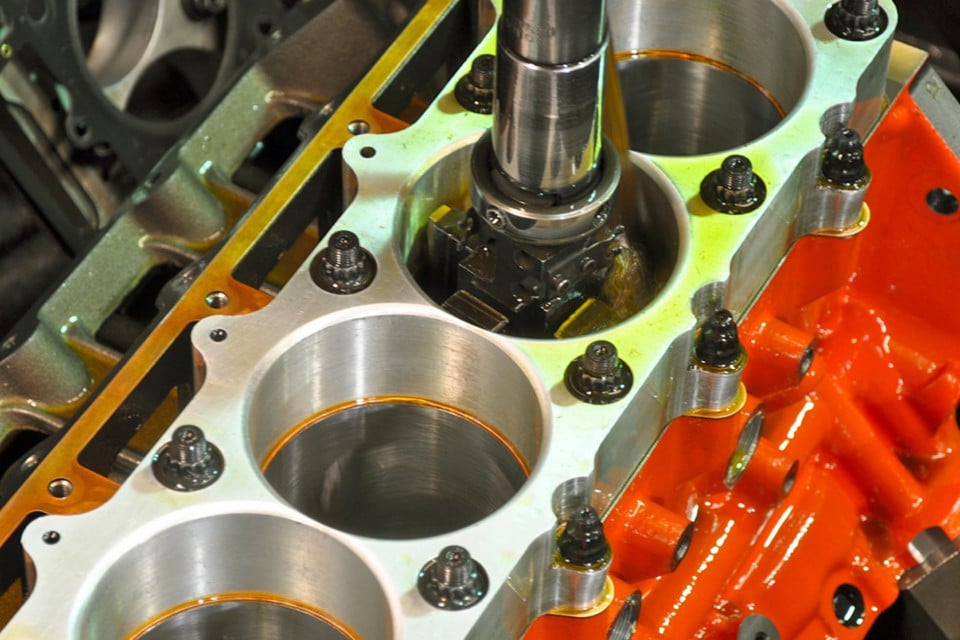Dispelling Engine Break-In Myths With High Performance Academy
Anyone who has been around high-performance engines knows the term “break-in”. In fact, it’s not uncommon to hear people talk about “break-in periods” for brand new cars, even. What, exactly, is being “broken-in”? What’s the proper procedure? Ask ten people and you are likely to get ten different answers. “This is an area where there is a huge amount of confusion and a huge amount of misinformation,” says Andre Simon of High Performance Academy, an online performance learning outlet.
First things first, what you’re doing when “breaking-in” a new performance engine – or any freshly rebuilt engine, for that matter – should be clearly defined. That is one of the largest pieces of misinformation in and of itself, according to Simon. “We must understand what it is we are actually trying to do. Some people think we are trying to bed in the bearings, or crankshaft, and that’s just not the case,” says Simon. “If you end up with metal-to-metal contact between the bearings and crankshaft journals [which would occur in a bedding process], you’re going to cause damage. Once that contact occurs, no amount of gentile running is going to fix that.”
What is actually being done during engine break-in is fairly simple – it’s the controlled bedding, or wearing-in, of the new piston rings on the hone of the cylinder walls. “We are trying to bed those rings so that they achieve a correct seal against the cylinder walls, and we have a relatively narrow window in which to do this,” relates Simon. “Once we achieve that seal, we end up with an engine that creates good power, has low blow-by, and has low oil consumption.”
“We’re using the rough surface of the hone pattern to abrade the rings and make them seat,” Simon explains. The crosshatch pattern of the hone in the cylinder like a file on the outer surface, creating a perfect fit within the bore. While that may sound simple – and really, the actual mechanics of it are – the process to actually achieve that is a delicate balancing act, as that crosshatch is only abrasive for a limited amount of time. “The reason there’s a narrow window is because that hone pattern will be broken down in time,” Simon continues.
The proper cross-hatch pattern not only retains oil throughout the life of the engine, but the rough finish acts as a file to properly bed the rings in during the break-in process. However the sharp edges only last a limited amount of time. Once those edges are worn down, the ring bedding process is over, whether they’ve properly bedded to the cylinder walls or not.
Where things get complicated, is the proper way to maximize the effectiveness of that period where the crosshatch is essentially file-fitting the piston rings to the bore. “My process is one which I’ve gone though and developed through my career. It works exceptionally well, and as with most engine builders, I’m a bit superstitious about it,” says Simon. “The worst thing you can do while breaking in an engine is baby the engine or allow it to idle for extended periods, particularly when it’s hot. That will place almost no load on the rings and it will allow that hone pattern to be broken down without actually performing its job.”
However, while you don’t want a light load, you also don’t want to go to the other extreme either. “What we want to use is moderate amounts of load and moderate amounts of RPM,” explains Simon. “What happens with moderate loads, is that combustion pressure gets behind those rings, and pushes them out against the fresh hone pattern. That friction against the cylinder wall helps the bedding process along. However, that friction creates a lot of heat, so we need to be careful of that. You don’t want to go straight to wide open throttle and 8,500 rpm.”
Additionally, the lubricant used in the initial break-in period can have a large impact on how well the rings seat., and results in yet another balancing act. “The goal is to use an oil which will allow enough friction for the rings to bed in correctly. Common high-performance synthetic oil is so slippery it will actually inhibit the wear required to bed the rings in. So you don’t want to use super slick full-synthetic oils to break the engine in,” reveals Simon.
He prefers to use mineral-based oil, during break-in, as it will still protect the engine, but not be so super slippery as to be detrimental to the break-in process. There are a number of break-in specific oils on the market, which usually contain other additives to protect other parts of the engine in its early stages of life, and preferences on which one is best are about as varied as the varieties of oil themselves.
One final myth that Simon aims to bust, is extended engine break-in periods. “After a couple hundred kilometers of use, your rings are as bedded in as they’re ever going to be. After that, it’s all downhill, so you might as well get out and start enjoying your engine,” he says. “Exceedingly long break in periods are absolute rubbish.”


